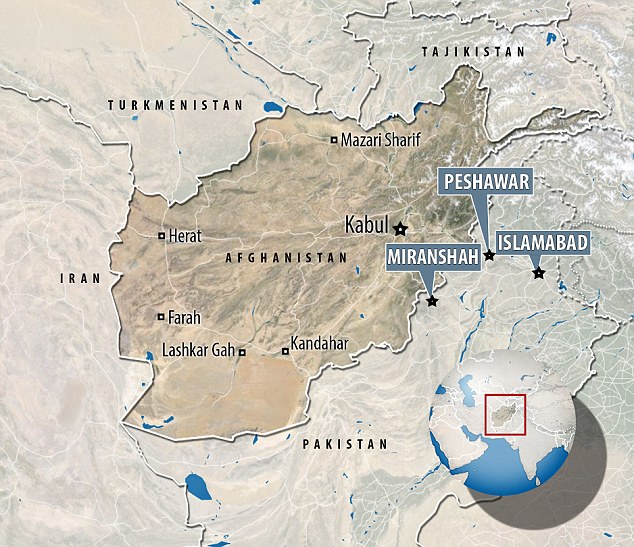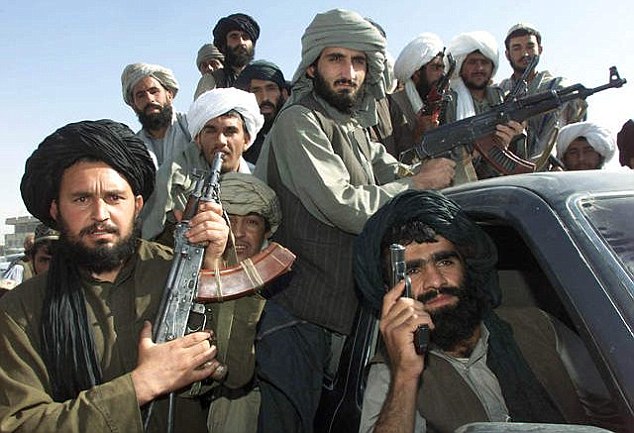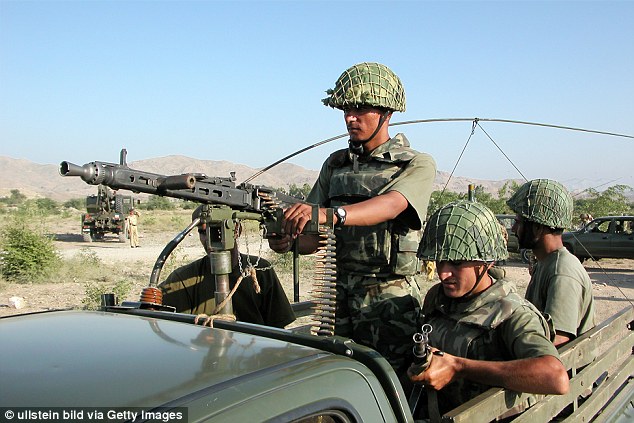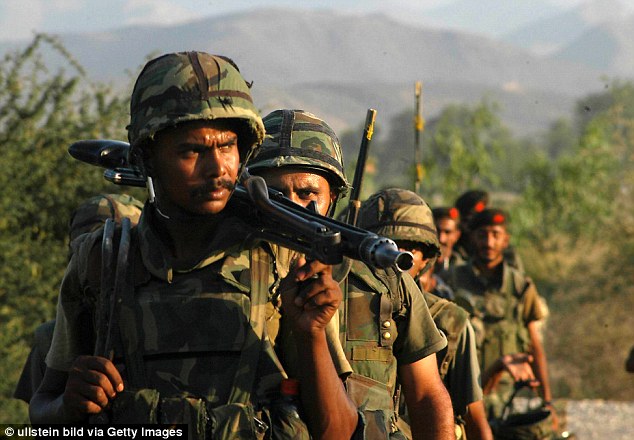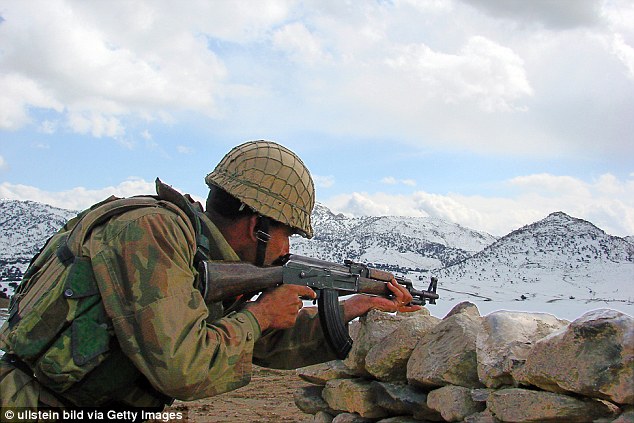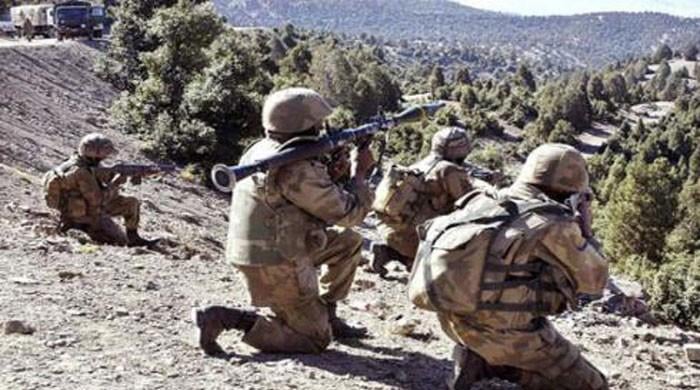hussain0216
ELITE MEMBER

- Joined
- May 29, 2012
- Messages
- 21,096
- Reaction score
- -22
- Country
- Location
Winning the war on terror: From the badlands of Pakistan where Al Qaeda planned their attacks on Britain, PETER OBORNE, the first Western jounalist to visit this epicentre of terror files a riveting dispatch
For more than a decade, the Pakistani tribal area of North Waziristan has been the deadly epicentre of global terror.
This mountainous area on the remote Afghan border was the secure base from which Taliban and Al Qaeda warlords launched attacks across the world.
Many have been aimed at Britain.
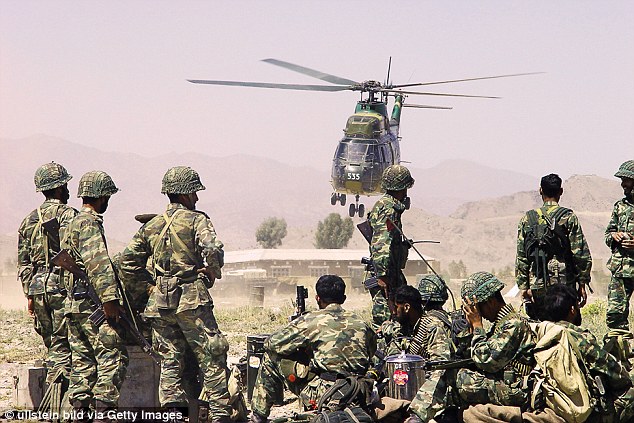
+12
The Pakistani army, pictured has been looking to reassert control over their northern border
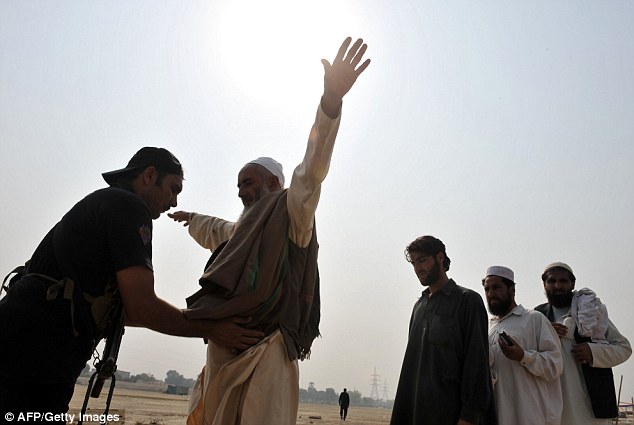
+12
The area of Waziristan is the location where the 7/7 bombings on London were planned

+12
The area was also home to a plot to detonate liquid explosives on a trans Atlantic aircraft
For example, it was from here that Rashid Rauf (the Al Qaeda terrorist who at the time was described as ‘one of the world’s most wanted’) masterminded the 7/7 London bombings in 2005 which killed 52 and injured more than 770 people.
Rauf — born in Pakistan but radicalised by a sect in Birmingham in his late teens after moving to Britain in the early Eighties — was also suspected of being the ringleader of a foiled plot to detonate liquid explosives on a transatlantic plane in 2006, which a senior British policeman said would have caused ‘mass murder on an unimaginable scale’.
I have travelled regularly to Pakistan ever since the darkest days of the country’s descent into terror. At times, the country seemed on the verge of collapse. Indeed, at one point it was regarded by global intelligence agencies, including Britain’s MI6, as the most dangerous state in the world.
This week, I was the first Western journalist in many years to travel to the North Waziristan capital, Miranshah.
Until recently, it was from these streets that Taliban commanders ordered public beheadings and Al Qaeda chiefs groomed innocent children as young as ten to be suicide bombers.
It seemed unimaginable back then that Al Qaeda and the Taliban would be driven out of Pakistan’s tribal territories. Yet the Pakistan army now claims that every last Taliban fighter has been expelled.

+12
The Pakistani army cleared the city of Miranshah of the Taliban following a massive campaign

+12
Until recently, the Pakistani Taliban had the run of the area grooming children as young as ten to become suicide bombers and performed public executions on the streets of the city
It is nothing short of miraculous that Pakistan survived after so many atrocities and disasters.
This, then, is a story of optimism; of how the men of terror can be taken on and defeated.
After a sustained assault, Pakistani troops managed to take control of Miranshah. The terrorists fled — but left a scene of heartbreaking devastation.
Entire streets were reduced to rubble. The city’s ancient market, once home to more than 600 shops, was flattened.

+12
Pakistani troops have now expelled the Taliban from the region in a display of raw courage
The blight of terrorism in the area dates back to 9/11 in 2001, and the subsequent invasion of Afghanistan by the Western allies in revenge for the attacks on America.
In order to escape pursuing British and U.S. troops, Taliban and Al Qaeda forces, including the latter group’s leader Osama Bin Laden, fled from their traditional strongholds in Afghanistan into the tribal areas of Pakistan.
They were safe here under the protection of local tribes, many of whom had strong links to Afghanistan.
In due course, the Taliban used their new bases in Waziristan to attack British and American forces in Afghanistan.
Thousands of foreign fighters, including British Jihadis such as Rashid Rauf, who had been a student at Portsmouth University and had worked for a bakery in Birmingham, flocked to join them.
The Pakistan army was duly placed under huge pressure from the West to attack the Taliban in these tribal hideouts.
After protracted battles, the Pakistan military finally managed to clear the region of its last terrorist stronghold. But not before the Taliban had launched numerous reprisal attacks inside Pakistan itself, engulfing the country in a bloody civil war that claimed tens of thousands of lives.

+12
Pakistani troops took on and defeated the Taliban but left behind a scene of devastation
Pakistani army clears militant stronghold in 2016
Loaded: 0%
Progress: 0%
0:00
Play
Current Time0:00
/
Duration Time1:47
Fullscreen
My guide, Major General Hassan Azhar Hayat, is understandably triumphant. He claims that the destruction of the city was a price that had to be paid as the only way of driving out the terror chiefs who he says had held the citizens of Miranshah hostage.
Now, local people who had been forced to flee are returning to their homes.
Hassan, who commands Pakistan’s 7th Division on the north-west frontier, drove me through the ruins to visit the site of a former Taliban bomb factory in a Miranshah suburb.
Cynically, Taliban warlords had located it in the middle of a densely populated area, in the belief that the military would never attack for fear of causing massive loss of civilian life.

+12
The West put pressure on Pakistani authorities to take control of their northern tribal region
We found ourselves in what was once a sophisticated complex. The terror chiefs had left behind large containers for glycerin, ammonium nitrate, manganese and nitric powder as well as machines to convert these raw materials into bombs.
The bombs would be used with deadly effect in indiscriminate attacks which claimed thousands of lives, almost certainly including those of British troops serving in Afghanistan.
Jihadist literature that was found at the site revealed that the factory was run by the Afghan Islamic Emirate — popularly known as the Afghan Taliban.
There was still much evidence of the bomb-makers: at the entrance were gas masks and rubber gloves to protect them. In a bizarre touch that belied the deadly nature of this bomb factory, the living quarters were decorated with murals depicting rivers, orchards and idyllic scenes from the countryside.
This was one of a number which had been discovered in the two-year operation to recover North Waziristan from terrorist control. In total, the army found 310 tons of explosives, 25,000 rifles and more than two million bullets.
The military also uncovered a terrorist infrastructure that included a media centre hidden in the basement of a mosque, secret prisons where kidnap victims were held, and deep tunnels to protect fighters from precision bombs. Major General Hassan described it as the terrorists’ version of the Pentagon in America.

+12
The Taliban hid out in the centre of a densely populated area believing they were safe
There was also a military college — the Taliban equivalent to Britain’s Royal Military Academy at Sandhurst — where fighters were trained.
The Pakistan Army is now convinced that after 15 years of pure horror it has won the war on terror in Pakistan’s tribal areas.
Statistics now show that terrorist violence in Pakistan has fallen by three quarters in the past two years.
Hassan told me: ‘We feel there is no threat now. We’ve operated against terrorists of all colours and creeds here. There are no no-go areas any more.’
The truth would seem to be that the terrorists have either been killed or have fled across the border into Afghanistan, where, sadly, they have regrouped to launch assaults against Pakistan border positions. There had been seven attacks in the ten days before my visit.
To counter the threat, the Pakistan army has built more than 1,000 border posts to prevent terrorists crossing back into the country.
And there have still been terrible atrocities, such as a recent attack on the shrine of Sufi Saint Lal Shahbaz Qalandar in Sehwan Sharif which killed 88 and left many horribly injured.
Yet, overall, the progress against the terror cells has been remarkable. At the height of the attacks from North Waziristan three years ago, Pakistan’s commercial capital of Karachi was ranked the sixth most dangerous city in the world. Now, violence has fallen so sharply it ranks 32nd. Admittedly, the costs of this war have been horrifying. More than 4,000 Pakistan soldiers died in a conflict that — it is no exaggeration to say — has at times come close to bringing the country to its knees. Fighting the terrorists has cost the country tens of billions of pounds, and has had devastating consequences on the nation’s people.
At one point, terrorists controlled territories less than 100 miles from the capital, Islamabad. There were even fears that the Taliban might seize control of Pakistan’s nuclear warheads.
As ever in the world of terrorism, there is a wider context to these local issues.

+12
During a two-year period, the Pakistanis recovered 310 tonnes of explosives, 25,000 rifles and more than two million bullets - and even a media centre hidden under a Mosque
Speaking privately, Pakistan military strategists blame Tony Blair’s misguided decision to invade Iraq to remove Saddam Hussein in 2003 as the trigger for their country’s descent into horror.
One general told me that the West’s war against Saddam distracted world leaders from the fight against the Taliban and Al Qaeda at a crucial moment, allowing terrorists to regroup in Pakistan’s tribal areas.
With passion, he told me: ‘One day, Mr Blair will be tried as a war criminal.’
Meanwhile, officially, the Pakistan military says the task today is no longer to defeat the Taliban in battle but to rebuild the city of Miranshah. Originally, the area developed after a key fort was built here by the British in 1905 to control North Waziristan and it was said that ‘there could have been no place more dangerous in the whole of the British Empire’.
The Pakistani authorities are busy building schools, hospitals and a market to replace the one destroyed in the fighting. In effect, this means the construction of an entire new city.
I was taken to the Golden Arrow High School which is due to open its doors to 1,000 students next month. Its chemistry classes, computer laboratory and library are said to be equal to any high school in the world.
Schools such as this will provide a desperately needed alternative education to that provided by the madrassas (Islamic religious schools) which have been breeding grounds for terror in this part of the world for many years.
Speaking to locals, there are raw memories of the horror of living under the Taliban.
One old man told us how he saw dead bodies of men left on the ground of the town bazaar after they had been executed because they were considered to be spies.
Inevitably, the success of the Islamabad government’s operation to clear out the terrorists has been questioned by some.
Mohsin Dakar, a lawyer who was brought up in Miranshah but now works in Islamabad, claims that not all terrorists have gone. He said he had seen ‘militants standing next to us in the queues’ as people were led back into the city and he questioned whether ‘any real objective had been achieved’.
Let’s hope he is wrong.
In the nearby city of Peshawar, I visited the army school where 144 children and staff had been killed in an appalling attack by the Taliban. Today, though, a party was being held to celebrate students who were departing the school.
Munib, a 17-year-old student who had survived the attack, said he was still haunted by the memories of his dead friends. They still visited him in his dreams.
I asked him his ambition. ‘I plan to become a doctor and work in their memory.’
This is the indomitable spirit that gives the world hope that Pakistan has escaped from an age of unspeakable bloodshed and that the men of terror can be defeated.
For more than a decade, the Pakistani tribal area of North Waziristan has been the deadly epicentre of global terror.
This mountainous area on the remote Afghan border was the secure base from which Taliban and Al Qaeda warlords launched attacks across the world.
Many have been aimed at Britain.

+12
The Pakistani army, pictured has been looking to reassert control over their northern border

+12
The area of Waziristan is the location where the 7/7 bombings on London were planned
+12
The area was also home to a plot to detonate liquid explosives on a trans Atlantic aircraft
For example, it was from here that Rashid Rauf (the Al Qaeda terrorist who at the time was described as ‘one of the world’s most wanted’) masterminded the 7/7 London bombings in 2005 which killed 52 and injured more than 770 people.
Rauf — born in Pakistan but radicalised by a sect in Birmingham in his late teens after moving to Britain in the early Eighties — was also suspected of being the ringleader of a foiled plot to detonate liquid explosives on a transatlantic plane in 2006, which a senior British policeman said would have caused ‘mass murder on an unimaginable scale’.
I have travelled regularly to Pakistan ever since the darkest days of the country’s descent into terror. At times, the country seemed on the verge of collapse. Indeed, at one point it was regarded by global intelligence agencies, including Britain’s MI6, as the most dangerous state in the world.
This week, I was the first Western journalist in many years to travel to the North Waziristan capital, Miranshah.
Until recently, it was from these streets that Taliban commanders ordered public beheadings and Al Qaeda chiefs groomed innocent children as young as ten to be suicide bombers.
It seemed unimaginable back then that Al Qaeda and the Taliban would be driven out of Pakistan’s tribal territories. Yet the Pakistan army now claims that every last Taliban fighter has been expelled.
+12
The Pakistani army cleared the city of Miranshah of the Taliban following a massive campaign
+12
Until recently, the Pakistani Taliban had the run of the area grooming children as young as ten to become suicide bombers and performed public executions on the streets of the city
It is nothing short of miraculous that Pakistan survived after so many atrocities and disasters.
This, then, is a story of optimism; of how the men of terror can be taken on and defeated.
After a sustained assault, Pakistani troops managed to take control of Miranshah. The terrorists fled — but left a scene of heartbreaking devastation.
Entire streets were reduced to rubble. The city’s ancient market, once home to more than 600 shops, was flattened.
+12
Pakistani troops have now expelled the Taliban from the region in a display of raw courage
The blight of terrorism in the area dates back to 9/11 in 2001, and the subsequent invasion of Afghanistan by the Western allies in revenge for the attacks on America.
In order to escape pursuing British and U.S. troops, Taliban and Al Qaeda forces, including the latter group’s leader Osama Bin Laden, fled from their traditional strongholds in Afghanistan into the tribal areas of Pakistan.
They were safe here under the protection of local tribes, many of whom had strong links to Afghanistan.
In due course, the Taliban used their new bases in Waziristan to attack British and American forces in Afghanistan.
Thousands of foreign fighters, including British Jihadis such as Rashid Rauf, who had been a student at Portsmouth University and had worked for a bakery in Birmingham, flocked to join them.
The Pakistan army was duly placed under huge pressure from the West to attack the Taliban in these tribal hideouts.
After protracted battles, the Pakistan military finally managed to clear the region of its last terrorist stronghold. But not before the Taliban had launched numerous reprisal attacks inside Pakistan itself, engulfing the country in a bloody civil war that claimed tens of thousands of lives.
+12
Pakistani troops took on and defeated the Taliban but left behind a scene of devastation
Pakistani army clears militant stronghold in 2016
Loaded: 0%
Progress: 0%
0:00
Play
Current Time0:00
/
Duration Time1:47
Fullscreen
My guide, Major General Hassan Azhar Hayat, is understandably triumphant. He claims that the destruction of the city was a price that had to be paid as the only way of driving out the terror chiefs who he says had held the citizens of Miranshah hostage.
Now, local people who had been forced to flee are returning to their homes.
Hassan, who commands Pakistan’s 7th Division on the north-west frontier, drove me through the ruins to visit the site of a former Taliban bomb factory in a Miranshah suburb.
Cynically, Taliban warlords had located it in the middle of a densely populated area, in the belief that the military would never attack for fear of causing massive loss of civilian life.
+12
The West put pressure on Pakistani authorities to take control of their northern tribal region
We found ourselves in what was once a sophisticated complex. The terror chiefs had left behind large containers for glycerin, ammonium nitrate, manganese and nitric powder as well as machines to convert these raw materials into bombs.
The bombs would be used with deadly effect in indiscriminate attacks which claimed thousands of lives, almost certainly including those of British troops serving in Afghanistan.
Jihadist literature that was found at the site revealed that the factory was run by the Afghan Islamic Emirate — popularly known as the Afghan Taliban.
There was still much evidence of the bomb-makers: at the entrance were gas masks and rubber gloves to protect them. In a bizarre touch that belied the deadly nature of this bomb factory, the living quarters were decorated with murals depicting rivers, orchards and idyllic scenes from the countryside.
This was one of a number which had been discovered in the two-year operation to recover North Waziristan from terrorist control. In total, the army found 310 tons of explosives, 25,000 rifles and more than two million bullets.
The military also uncovered a terrorist infrastructure that included a media centre hidden in the basement of a mosque, secret prisons where kidnap victims were held, and deep tunnels to protect fighters from precision bombs. Major General Hassan described it as the terrorists’ version of the Pentagon in America.
+12
The Taliban hid out in the centre of a densely populated area believing they were safe
There was also a military college — the Taliban equivalent to Britain’s Royal Military Academy at Sandhurst — where fighters were trained.
The Pakistan Army is now convinced that after 15 years of pure horror it has won the war on terror in Pakistan’s tribal areas.
Statistics now show that terrorist violence in Pakistan has fallen by three quarters in the past two years.
Hassan told me: ‘We feel there is no threat now. We’ve operated against terrorists of all colours and creeds here. There are no no-go areas any more.’
The truth would seem to be that the terrorists have either been killed or have fled across the border into Afghanistan, where, sadly, they have regrouped to launch assaults against Pakistan border positions. There had been seven attacks in the ten days before my visit.
To counter the threat, the Pakistan army has built more than 1,000 border posts to prevent terrorists crossing back into the country.
And there have still been terrible atrocities, such as a recent attack on the shrine of Sufi Saint Lal Shahbaz Qalandar in Sehwan Sharif which killed 88 and left many horribly injured.
Yet, overall, the progress against the terror cells has been remarkable. At the height of the attacks from North Waziristan three years ago, Pakistan’s commercial capital of Karachi was ranked the sixth most dangerous city in the world. Now, violence has fallen so sharply it ranks 32nd. Admittedly, the costs of this war have been horrifying. More than 4,000 Pakistan soldiers died in a conflict that — it is no exaggeration to say — has at times come close to bringing the country to its knees. Fighting the terrorists has cost the country tens of billions of pounds, and has had devastating consequences on the nation’s people.
At one point, terrorists controlled territories less than 100 miles from the capital, Islamabad. There were even fears that the Taliban might seize control of Pakistan’s nuclear warheads.
As ever in the world of terrorism, there is a wider context to these local issues.
+12
During a two-year period, the Pakistanis recovered 310 tonnes of explosives, 25,000 rifles and more than two million bullets - and even a media centre hidden under a Mosque
Speaking privately, Pakistan military strategists blame Tony Blair’s misguided decision to invade Iraq to remove Saddam Hussein in 2003 as the trigger for their country’s descent into horror.
One general told me that the West’s war against Saddam distracted world leaders from the fight against the Taliban and Al Qaeda at a crucial moment, allowing terrorists to regroup in Pakistan’s tribal areas.
With passion, he told me: ‘One day, Mr Blair will be tried as a war criminal.’
Meanwhile, officially, the Pakistan military says the task today is no longer to defeat the Taliban in battle but to rebuild the city of Miranshah. Originally, the area developed after a key fort was built here by the British in 1905 to control North Waziristan and it was said that ‘there could have been no place more dangerous in the whole of the British Empire’.
The Pakistani authorities are busy building schools, hospitals and a market to replace the one destroyed in the fighting. In effect, this means the construction of an entire new city.
I was taken to the Golden Arrow High School which is due to open its doors to 1,000 students next month. Its chemistry classes, computer laboratory and library are said to be equal to any high school in the world.
Schools such as this will provide a desperately needed alternative education to that provided by the madrassas (Islamic religious schools) which have been breeding grounds for terror in this part of the world for many years.
Speaking to locals, there are raw memories of the horror of living under the Taliban.
One old man told us how he saw dead bodies of men left on the ground of the town bazaar after they had been executed because they were considered to be spies.
Inevitably, the success of the Islamabad government’s operation to clear out the terrorists has been questioned by some.
Mohsin Dakar, a lawyer who was brought up in Miranshah but now works in Islamabad, claims that not all terrorists have gone. He said he had seen ‘militants standing next to us in the queues’ as people were led back into the city and he questioned whether ‘any real objective had been achieved’.
Let’s hope he is wrong.
In the nearby city of Peshawar, I visited the army school where 144 children and staff had been killed in an appalling attack by the Taliban. Today, though, a party was being held to celebrate students who were departing the school.
Munib, a 17-year-old student who had survived the attack, said he was still haunted by the memories of his dead friends. They still visited him in his dreams.
I asked him his ambition. ‘I plan to become a doctor and work in their memory.’
This is the indomitable spirit that gives the world hope that Pakistan has escaped from an age of unspeakable bloodshed and that the men of terror can be defeated.



